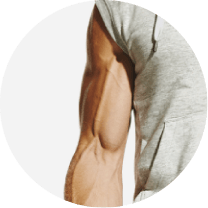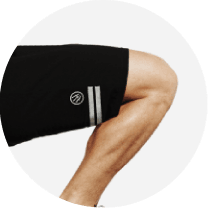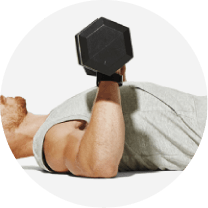28-Days-to-Lean Meal Plan
With the right plan and the right discipline, you can get seriously shredded in just 28 days.
Read article

With the right plan and the right discipline, you can get seriously shredded in just 28 days.
Read article

At age 62, "Big Bill" shares his wisdom to dominate one of the ultimate strength marks.
Read article
Follow these fit women we're crushing on for inspiration, workout ideas, and motivation.
Read article

You know the old maxim: There’s more than one way to skin a cat. That saying rings true when it comes to working out; almost no two bodybuilders have the same training philosophy. When it comes to rep ranges, some guys like training superheavy with low reps, while others prefer light weight and high reps. Some rest only a short period between sets, while others seem to wait an eternity before starting again. And no matter which side a lifter is on in regard to these training protocols, he tends to use the opposite tactic from time to time just for fun or to prevent stagnation.
Another issue that causes much debate is training frequency, or the recovery time between body-part routines. Some bodybuilders work each muscle group just once a week, while others do twice a week or more. But unlike varying reps, rest periods, and other variables, bodybuilders tend to stick to one—and only one—training frequency. For example, an individual who prefers training each body part once a week usually sticks to that pattern regardless of how heavy he’s training, the length of his rest periods, or his exercise selection. The key is to find what works best for you, which is easier said than done. And that’s where research comes in. It just so happens a group of scientists conducted a study to help you determine the best training frequency for you and only you.
The rules of training frequency used to be quite simple. Rule No. 1: Never train a muscle while it’s still sore. Makes sense, right? If a muscle is sore, it must still be recovering. But while that may work for the newbie who’s still hurting four or five days after his last workout, what about the experienced lifter whose soreness lasts only a day or two after a brutal workout? Does the rule extend to him, too? Not exactly. For the seasoned veteran, muscle soreness is no longer a tool to determine optimal training frequency. It takes a much deeper understanding of muscle recovery to really nail it down.
Here’s another rule to consider: Allow a minimum of 48 hours between workouts for the same muscle group. Not a bad barometer, yet it’s unrealistic for most guys, as it means you’d be going to the gym practically every day. Does that fit into your schedule? Didn’t think so. Also, 48 hours is the minimum recommendation and doesn’t ensure that you’ll be fully recovered.
On the other end of the spectrum, and a common practice these days, many bodybuilders allow a full seven days of rest for each muscle group. This is fairly prudent because it ensures adequate recovery and works well with a weekly schedule. But it doesn’t work for everyone; a full week could actually be too long of a recovery for you, and you could be missing out on some significant gains in strength and size. So how do you determine where you fall within the two- to seven-day time frame of muscle recovery? How do you know what your optimal training frequency is? Simple—you take a test.

Tampa Bay Rays S&C Coach Joey Greany shares his plan to help you run like an All-Star.

Get a little bit of fresh air while you're also getting a good sweat going.

The 2023 Men’s Physique champ hits chest day hard.






